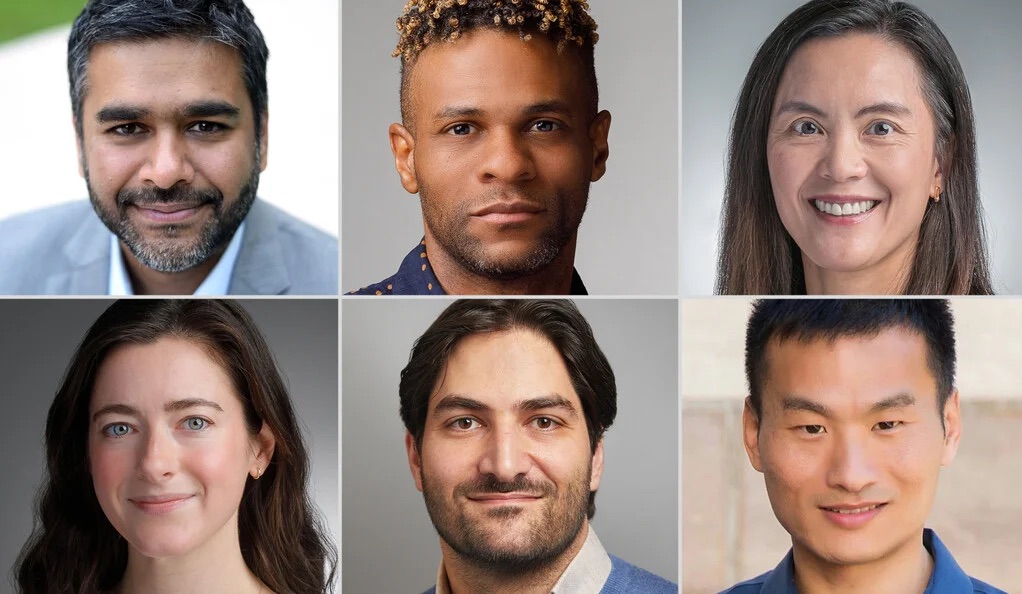Six Yale researchers receive NIH ‘High-Risk, High-Reward’ awards
These grants, awarded to exceptionally creative scientists, allow researchers to pursue innovative projects that challenge existing paradigms in health and medicine.

Yale News
Six Yale researchers were awarded highly prestigious ‘High-Risk, High-Reward’ grants from the National Institutes of Health, which are designed to give scientists the freedom to pursue higher-risk research with the potential for transformative impact across multiple fields.
The Yale researchers — Dr. Salil Garg, Dr. Diyendo Massilani, Dr. Wan-Ling Tseng, Dr. Sedona Murphy, Dr. Julien Berro and Dr. Xiaolei Su — pursue research projects in disciplines ranging from cellular heterogeneity to chronic childhood irritability. With support from the grant, these researchers hope to expand their unique, “high-risk” research projects.
“It’s a research project grant, but it absolutely has to transform a paradigm,” Dr. Patricia Labosky, program leader at the NIH, said. “It cannot be something that is obvious to anyone. It has to be an idea that’s really way out there.”
One of the recipients is Garg, an assistant professor of laboratory medicine at the School of Medicine. His lab investigates cellular heterogeneity: how one cell, with the same environment and genetic instructions, can develop into an embryo with different, complex cell types. Specifically, he aims to understand how cancer often hijacks this process, hoping to develop more effective treatments.
Garg’s lab also incorporates a novel approach to this research by integrating experimental and computational methods. By using machine learning to analyze large sequences of DNA, they can detect unexpected relationships between elements that we might not have seen, and generate new kinds of hypotheses regarding cancer. He compares it to using common large language models, like ChatGPT.
“What is DNA but the most beautiful four-letter language ever written, right? I think in many ways it’s actually a great problem to study from that perspective and see what we can learn about the development of cancer,” Garg said.
With the NIH award, Garg feels less pressured to produce immediate results and plans to use the additional funding to focus on developing novel approaches to cancer therapy.
Murphy, associate research scientist in cell biology at the School of Medicine, is another recipient of the grant. Her research investigates the three-dimensional structure of DNA, and how this structure influences gene regulation. It is specifically focused on epigenetic memory: how the 3D structure of the genome is related to cells remembering their identity.
This lab examines fundamental aspects of DNA regulation and challenges assumptions that have been established for years. Because of the innovative nature of her research, the lab’s findings have the potential to make a significant impact in a variety of fields, including cancer therapy.
“We’re making measurements of things that have previously never been able to be measured and connected,” Murphy explained. “It’s one of those exciting things where, who knows where in 10 years, this sort of foundational research will go or facilitate.”
Through the support of the NIH award, Murphy hopes to expand the lab by recruiting more lab members, and investigate additional problems that might yield long-term results.
Wan-Ling Tseng is an assistant professor at the Yale Child Study Center, a department under the School of Medicine. Her lab studies childhood mental health problems, with a specific focus on irritability, anger and aggression.
She plans to continue a longitudinal study, in which the lab follows school-age children over time to see how their symptoms developed and how they interact with their brain development. Functional magnetic resonance imaging, or fMRI, is used to see which parts of the brain are active or how different brain regions communicate with each other when kids are experiencing negative emotions such as frustration.
The goal of the lab is to understand symptoms of chronic anger and irritability over time, a strong predictor of future suicidality and depression. By weaving together layers of analysis, such as brain imaging, and tracking behaviors of children during the study, Tseng’s work is largely unprecedented in the field.
Tseng is hoping to use the knowledge that the lab will gain, with the help of the NIH award, to achieve early intervention and prevent children from gaining chronic symptoms in the future.
“I am teaming up with several colleagues and collaborators trying to turn the knowledge that we learn to better design interventions and treatment,” Tseng said.
Applications for the grant undergo a rigorous and competitive peer-review process, according to Labosky. Scientists NIH chooses scientists from other institutions to rank the research projects and assign them a score.
Notably, to receive the “High-Risk, High-Reward” award, the research projects do not need to have preliminary data. This makes the grant especially promising for research that is in its early stages and has significant potential.
Less than 10 percent of projects that applied received an award, according to Labosky. Yale researchers comprised six out of the 67 grants awarded this year.
The NIH also uses this award to promote more innovative research to young scientists.
“It’ll inspire some of these young researchers: they’re building their labs, they’re going to have trainees and students,” Labosky explained. “It’s so important to have the youth engaged and excited about science, so this is going to help them build their labs and move forward with really exciting research.”
The grants this year totaled up to about $207 million.







